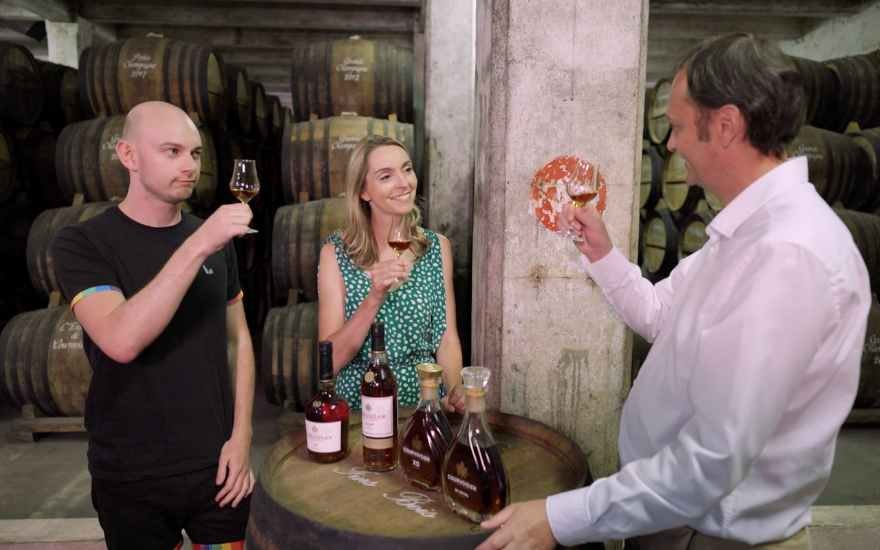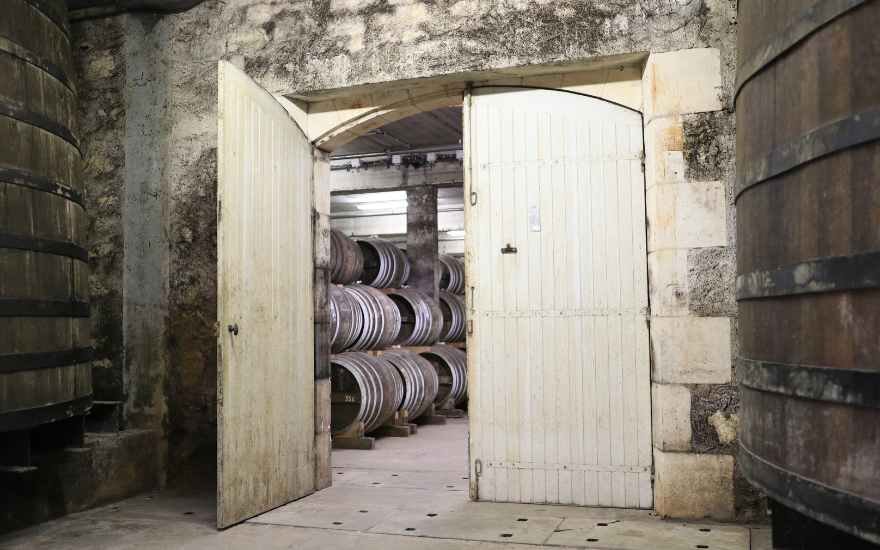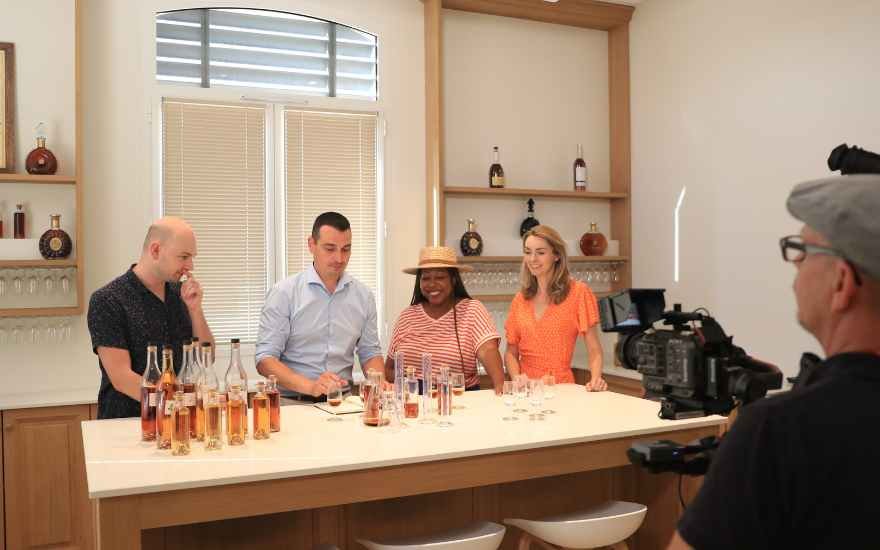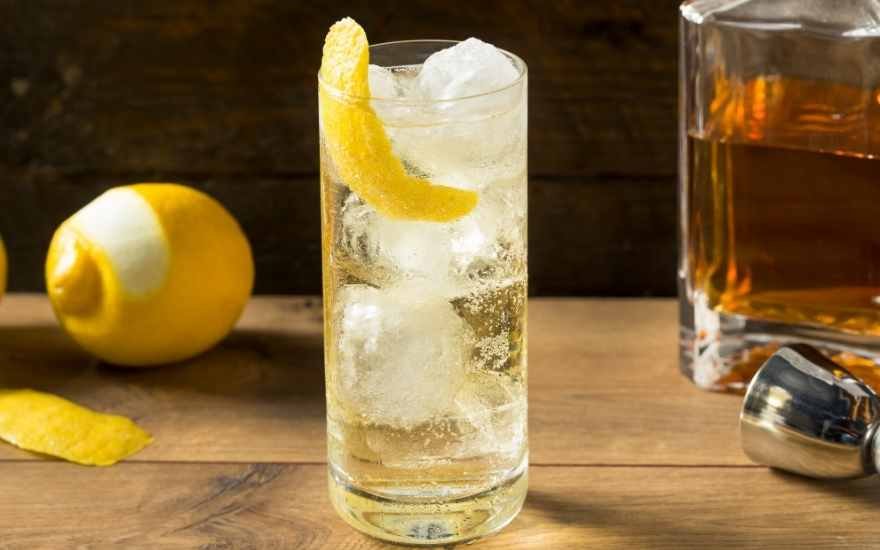The Three Drinkers in Cognac takes you on a full-on and fabulous exploration of the spirit of cognac and the beautiful region itself, but we know that not everybody is au fait with it. So, we’ve pulled together a complete beginner’s guide to cognac to give cognac newbies the best start.
Whether you know nothing at all about the rich world of cognac or if you’d simply like a refresher on its resurgence and what it’s all about, read on…
What is Cognac?
Cognac is a brandy, which means it’s an aged spirit distilled from fruit. To be called cognac however, the spirit has to be made from specific wine grapes, be subject to stringent production laws and, most importantly, it must originate from its namesake region in South-West France. All cognac is brandy, but not all brandy is cognac!
A BRIEF history of Cognac
Throughout the 16th and 17th centuries, the Dutch slowly fell in love with French wine but when they tried to transport it home, they found it couldn’t withstand shipment. To combat this oxidation, they began distilling it into eau-de-vie and named it ‘brandewijn’, aka - ‘burnt wine’. With space on the ships at a premium, merchants started distilling it twice over to produce higher-strength spirit.
Around this time, the brandy emanating from the Cognac region in Charente proved to be the cream of the crop and so strict production rules came into play to maintain quality and the region’s reputation. By the 18th century, renowned cognac houses appeared with the first being Martell in 1715 and Rémy Martin a decade later. Today, the region is dominated by the Big Four: Rémy Martin, Courvoisier, Hennessy and Martell, with lots of smaller, boutique houses to also discover.
Cognac became extremely popular, particularly with smugglers who struggled to meet their demands for the stuff! Trademarking and provenance became more desirable, and by the 20th century, six traditional Cognac regions were enshrined in law. By 1980 though, cognac was being seen as an old man’s drink, and going into the 1990s, the region started to run into a bit of economic trouble. Cognac’s fortunes started to change however, when an unlikely combination came together – cognac and rap music!
Before and after the turn of the millennium, cognac started to become fashionable again. Can’t Knock The Hustle by Jay-Z, and more significantly, Busta Rhymes’ Pass The Courvoisier II, promoted the spirit’s qualities to a brand new audience, and it became a stalwart of American music videos and then thanks to that, bars and clubs. This relationship continues today, with Martell making the lead rapper of Migos called Quavo, a brand ambassador in 2018.
It's worth pointing out that in Japan and China, cognac’s popularity sustained throughout this period as a symbol of status and quality and to this day, China match the US in how much they import.
Cognac is now enjoying a new wave of popularity, boosted by the growing trend for home mixology that came out of the Covid lockdown. With this in mind, let’s dive a little deeper into this resurgent spirit and look at the various styles and terminology you can find:
What are the different types of Cognac?
Three different white grapes are used but the resilient Ugni Blanc is by far the dominant pick, making up 98% of production. The spirit must be distilled twice in copper pot stills and aged for at least two years in oak barrels. Cognac is all about blending different ages of singular spirits, or ‘eaux de vie’, which is what makes it so deliciously complex. Producer nuances aside, there are distinct quality levels of cognac that can be recognised by large letters on a label, which are essentially age statements. Here’s briefly what you need to know, but there’s a dedicated article on this here for you if you want a deep dive!
VS: Very Special and aged for at least two years. Often used in cocktails.
VSOP: Very Superior Old Pale where the youngest eau de vie is at least four years old. Another for cocktails
Beyond this, you will find variations of older cognac, most commonly, XO and XXO:
XO: Extra Old where the youngest eau de vie in the blend must be 10 years old or above.
XXO: Extra Extra Old using eaux de vie that is at least 14 years of age, but usually a lot older!
There is another term that you’re likely to come across if you’re into your cognac and that’s ‘Hors d’âge’:
Hors d’âge: Meaning ‘without age’. this is a term assigned by Cognac’s governing body for liquids that are particulalry old.
How do you drink Cognac?
Cognac might surprise you with how deliciously versatile it is. Quality nuanced blends in the XO area are often sipped neat, over ice or with a splash of soda or ginger ale for a gorgeous highball. However, as with so many spirits, cocktails make for a fantastic entry point, particularly for VS and VSOP bottles.
Which Cocktails Can You make with Cognac?
So many memorable cocktails appear throughout The Three Drinkers in Cognac, and you can find more recipes across our website including some delicious Grand Marnier cocktails that bring Cognac to life in a whole new way. However, for a beginner, we think the three below offer a good place to start:
Cognac Gala Highball
Highballs are simple and easy ways to get into a new spirit because they allow the essence of the liquid to breathe and not be overshadowed whilst taking any edge off that might put off a complete newcomer. You can use whatever your preference would be for a mixer, be that premium tonic water, ginger ale, or our choice in Episode One of The Three Drinkers in Cognac – Sicilian Lemonade.
Ingredients
30ml cognac
80ml Sicilian Lemonade (Franklin & Sons)
Plenty of ice
Method
Simply pour everything over ice and enjoy. Easy and delicious.
Sidecar
One of the most famous ways to enjoy cognac is the Sidecar. The combination of tangy lemon, orange liqueur and rich cognac is the perfect tart and sweet balance. You can check out Aidy making this in Episode Three!
Ingredients
30ml cognac
20ml orange liqueur (Grand Marnier)
10ml fresh lemon juice
Method
All you have to do is shake shake shake with plenty of ice, strain and pour. To be a bit extra, we learnt a trick on the show, which is to rub lemon over the outside of the glass so that you smell it before you taste it!
French 75
A classic that cemented its place in cocktail history when ordered in Casablanca, The French 75 is fantastically bittersweet and although gin is often used these days, cognac is the traditionalist’s choice and works incredibly well.
Ingredients
30ml cognac
10ml fresh lemon
10ml syrup
champagne to top up
Method
Shake everything apart from the fizz with ice, strain into your flute and top up with that gorgeous Champagne. Lemon twist for garnish!
With all the incredible cocktails and discoveries made along the way, we’ve got a load more Cognac content across the website!






